Remanufacturing Explained
June 9, 2023
Listen to my voiceover here.
Remanufacturing, also known as “remade” and “resewn”, is the practice of taking something apart and using the pieces to make some thing new. It’s exciting because you’re don’t need any virgin materials to make something new, you’re using existing materials. Buckle up- we are taking a trip into the near-future! (Remanufacturing will become normalized over the next few years, but right now very few brands are doing it.)
The Process
As you can imagine, this requires a different approach than the manufacturing we are used to, and what I particularly love about this supply chain is that it requires labor, but no virgin materials. When I say labor, what I really mean is jobs, and I consistently feel energized by the idea that the circular economy is creating new types of jobs based on all types of reuse.
Imagine you want to make a pair of khaki pants using linear, traditional manufacturing. Your commons steps are:
Design the pants you want to make, and make a tech pack explaining how they should be sewn
Source your desired fabric from a mill
Have it dyed to your color specifications (which creates uniform color for your whole production)
Send it to be cut into pattern pieces
Have those pieces sewn together to make the pants
For circular remanufacturing, the steps at the beginning are different. If you want to design a pair of khaki pants, you’d need to:
Source a whole lot of used khaki clothing (from a vendor like BVH, below)
Make sure the colors of the items fit within your specifications (it’s extremely difficult to get the same exact color across post-consumer textiles)
Have them deconstructed. (The process of deconstructing a piece of clothing usually consists of taking it apart at the seams and removing any trims, including zippers, waist bands, grommets, etc. I like to imagine a video in my mind of someone sewing an entire garment and then playing it in reverse to imagine what needs to happen to deconstruct a garment.)
Based on what’s available, design a new pattern with smaller pattern pieces (since all your materials will be cut out of existing clothes, not out of big bolts of fabric)
Have your pattern pieces cut out of those deconstructed clothes
Sew the pieces together to make your remanufactured pants
It’s worth noting that this is the process for post-consumer waste (i.e. after a consumer has purchased and used the item) but you can also use pre-consumer ‘waste’ (i.e. materials from the production process that haven’t gone to the consumer like cutting room scraps, which is what zero waste daniel does).
This puts some new constraints on your design process. I’ve found that designers thrive when given the tools and the knowledge to design within a new set of boundaries because it’s a highly creative challenge.
In this newsletter, I am featuring two amazing vendors, BVH and Make Aneew. I cannot stress enough how groundbreaking they are.
First, BVH:
Steven Bethel, co-founder of BANK & Vogue, BVH and Beyond Retro, has created a whole eco-system of businesses based on post-consumer clothes (the dream!). His businesses buy 3.5 million garments per week of unwanted used items from charities and sort them for their highest value (a major principle of the circular economy). 3.5 million. Steven says, “The ethos of our business is celebrating value for what is already there. Things that have been worn have patina, they have character, and I’m a really big believer in sharing and saving that.” They sell the on-trend, high quality items at Beyond Retro stores. For all the items that aren’t resellable as-is, they sort them for their next highest value, and many of them are used as raw materials for remanufacturing. They disassemble the clothes and use them as pattern pieces or components for remanufactured goods. For example, they supply Converse with pattern pieces for some of their shoes. They also make their own remanufactured goods for their Beyond Retro stores. This can be something simple (and smart!) like making cutoff shorts from broken jeans, or it can be more complex like making black leather bustiers out of post-consumer leather jackets. In a typical month, they upcycle 20,000 items for their shops.
Above you can see a red suede skirt pre-deconstruction.
Above are the pattern pieces cut from that skirt for remanufacturing.
Above is the bag made out of that red suede skirt.
A key challenge of remanufacturing is creating a process within which designers can be successful. Steven spoke to me about this process:
“How do we get a design team to understand the depth and width of raw materials available for them to design into? How do we translate those designs at scale? One of the critical things we learned is how to make ‘material attribute sheets’. If we’re going to make a leather corset, we know the leather needs to be a certain thickness, color, subtlety. We write that on the material attribute sheet. This allows our picking and grading team to sort fabrics against designers’ needs.
What makes this scalable is we can present design teams with our inventory of material attribute sheets so they can understand what volume and size of components are available in the materials they want. If you give a designer the constraints, they’ll design into it. They just need to understand the materials.
Our skillset is taking the material, cutting it and delivering it to a 3rd party manufacturer (i.e. sewing factory) who has the skill set to sew it. We want to deliver cut components as if it came from their cutting room floor. We are not disrupting the typical manufacturing process- that’s how we are going to achieve scale.”
Another key factor to consider when using post-consumer goods for manufacturing is the environmental savings. It takes water, land, carbon and chemicals to make new materials, so by using existing materials there are savings to be quantified. “In 2018 BVH component and upcyling projects saved over 76,000 garments from landfill resulting in a net savings of approximately 200 million litres of water and over 90 tonnes of CO2.” BVH
Second, Make Aneew
Another vendor in the remanufacturing space is Make Aneew. Carolina Bedoya and Carmen Gama are the co-founders, and they specialize in remanufacturing and repair. (We all worked together at EILEEN FISHER Renew.) They have created a new production process for remanufacturing, or ‘resewn’, and have worked with brands like The Big Favorite and Public School. Make Aneew runs production in New York City where they have long-term relationships with local cutters and sewers- brownie points for Made in the USA! They work with brands to design brand-right resewn pieces, they source post-consumer materials either from the brand or from textile recyclers, and they deliver finished goods.
One of the things I love about their designs is that they don’t scream ‘remade’. They don’t feel like a patchwork of a bunch of different garments, which allows their designs to feel as elevated as a brand’s mainline offering.
This dynamic pair has experienced first hand the new jobs that are created within this sector of the circular economy. Carolina says, “I feel the most proud of training a team of wonderful women with no textile or fashion background into new circular design roles.” Over the many years we have worked together, both Carolina and Carmen have honed and mastered the design and operational expertise needed to turn post-consumer textiles into new clothes. Brands can now take advantage of this future-oriented skillset and create their own remanufactured collections which require no virgin materials and serve as amazing storytelling vehicles!
“It has definitely been an enriching experience to work with like minded partners in the industry. Helping them realize their design vision while creating an operation that supports using recycled clothes and textiles to create a new and more sustainable product is what we are all about. We love it.” - Carolina Bedoya, Co-Founder Make Aneew
I hope this newsletter got you excited about the prospect of tackling a post-consumer materials project! If you choose to pursue this kind of offering, you will be one of the first and you will learn much along the way about using what already exists to create beautiful brand-right products. Feel free to get in touch with me if you need a nudge in the right direction or you want help building a strategy around this kind of offering.
Lastly, if you want to learn more about the strategies and operations of the fashion circular economy, check out my 2 hour class coming up in June and July!
-Cynthia





